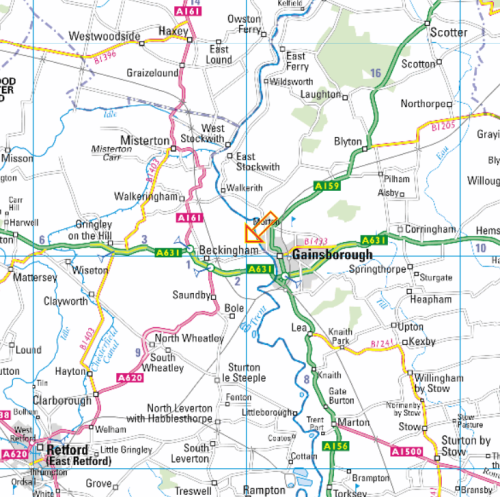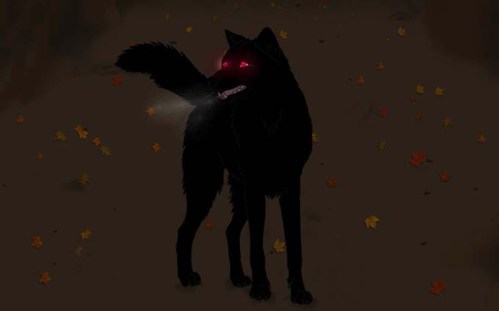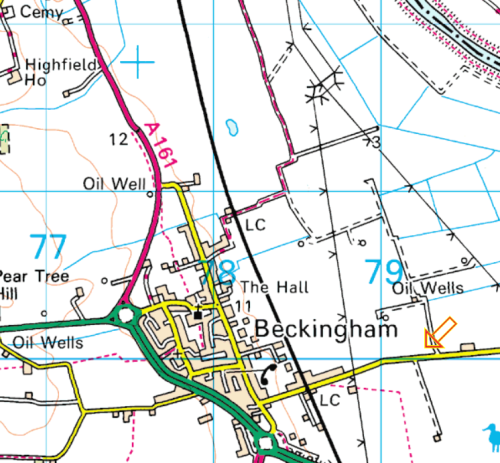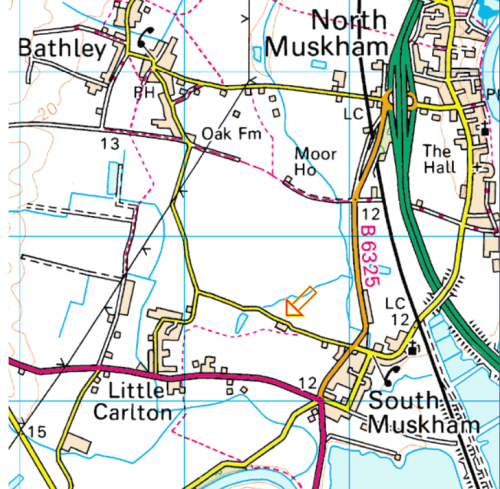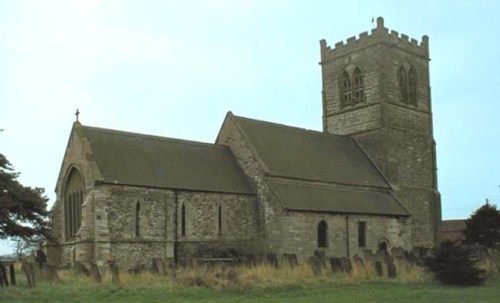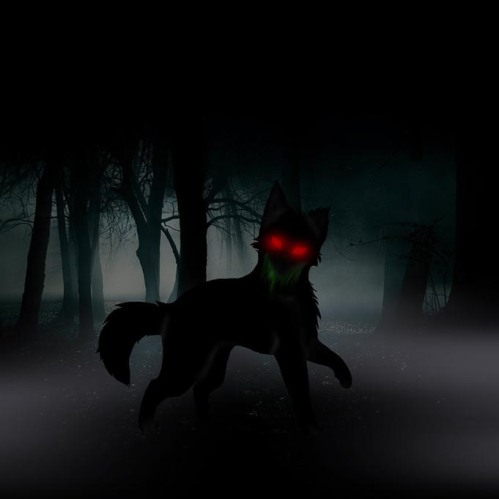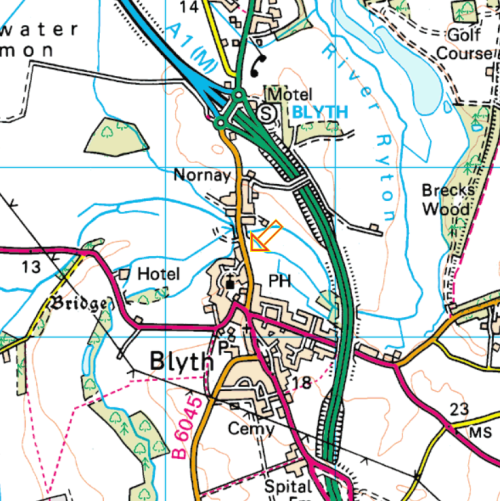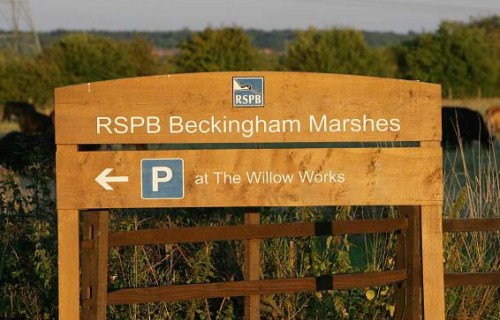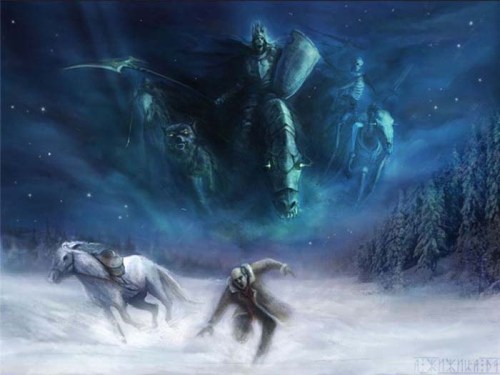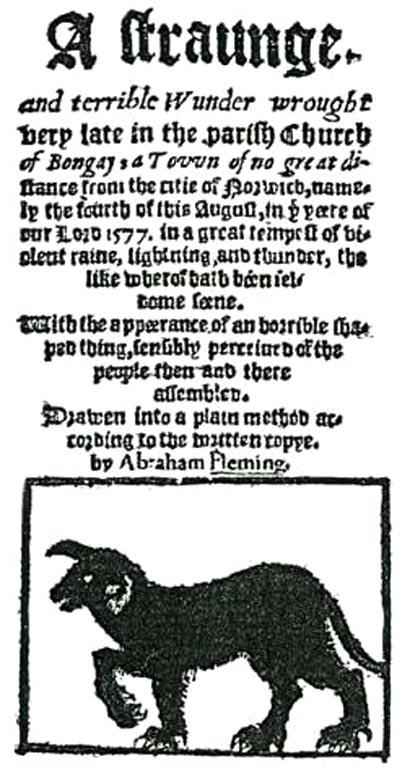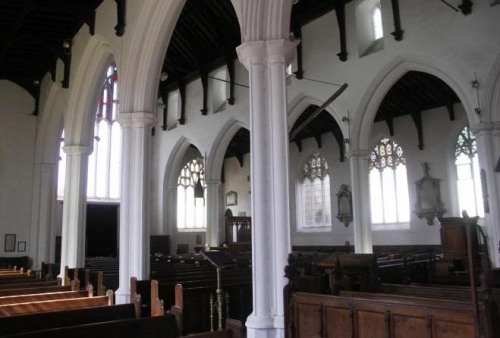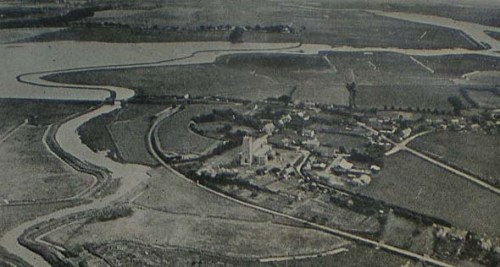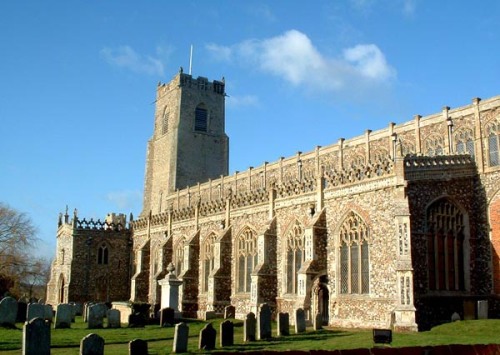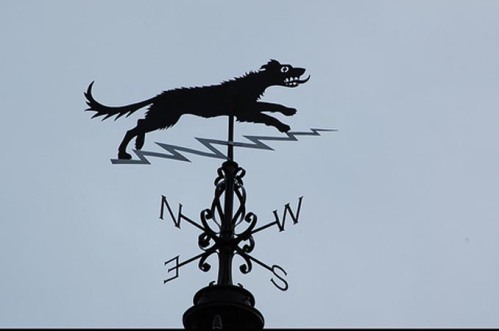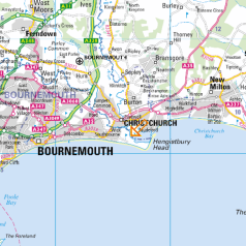Around ten or fifteen years ago, I was a teacher of Religious Studies as well as my main subject of French. We were studying the Afterlife, so, towards the end of, I think, the Christmas term, I asked the boys to write down for homework their own ghostly experience or a ghostly encounter that either their parents or anyone close to them had had. Here is a selection of the stories they came up with.
And, of course, yes, boys can tell lies just like everybody else, but by then I had taught this class for four months, seeing them for an hour and a half every week and I did not really think that anybody was lying. They may have been mistaken in their interpretation of events, but I’m sure they were sincere in what they thought was happening. This effort came from the parent, or even grandparent, of one of the pupils…
“My ghost story”
from Daniel J Furse who lived in the Old Manor House from 1956 to 1964.
“I bought the house from one of the printer Milward family and he told me that when he moved in there was a row of wire operated bells hanging in the passage by the kitchen, although they were all disconnected. Every now and then, at night, these bells would ring wildly. On investigation, no one was ever seen but the bells were all swinging on their springs!
Our own contribution was fairly mundane but baffling. In what was the dining room – next to the kitchen where there now appears to be a door, we had a very large Jacobean oak sideboard tight against the wall, and above it hung a picture. Sometimes, when coming down in the morning, we would find the picture neatly stowed under the sideboard, with the hook still in the wall, and the cord intact.”
I live in the Old Manor House in Lenton regularly referred to as haunted. We have some accounts of manifestations of the ghost in the past one of which I have quoted above. There is one room that is thought to be the “haunted” room. It was in this room that someone was so frightened by what they saw or heard that it caused the previous owners to have an exorcism in the house. We ourselves have had some strange experiences. We seem to have a “Visitor’s curse”. More often than can be explained, something has happened with our lighting, heating or kitchen appliances when a guest was either there or coming. Sometimes just one system fails, but the most dramatic was when a bar of spotlights fell down from the ceiling near some guests. Another time when we were expecting guests for Christmas, all lighting, heating and cooking appliances, including the Aga which runs on gas and the electric cooker which relies on electricity, refused to work.
Hopefully we can have a ghost- free Christmas this year!”
This was a very popular topic indeed with boys of fourteen and fifteen.
One young man told me the story of how he had seen a ghost when he met up with one of his friends who attended another school in, I think, Grantham. The boy went from Nottingham to spend the whole weekend as his friend lived quite a long way out in the Lincolnshire countryside. They stayed in the friend’s house which was very large with a very large garden. On the Friday evening, as soon as the visitor had unpacked, both boys went outside to see if they could see the phantom which the host had already explained could often be seen as it walked in the garden. The visitor from Nottingham was very excited that the garden was haunted and that he might actually see a real ghost.
The young man told me that as he stood there with his Lincolnshire friend in the early evening they saw not a sharply defined ghost, but a pale blue patch of mist or smoke, shaped like a human form. It moved across the end of the garden from right to left and by the time it reached the left-hand edge it was beginning to disappear.
Supposedly, it was the ghost of a Second World War Luftwaffe flier whose aircraft, a Heinkel III bomber had been shot down, and he had been killed.
Previously, I had been told about a slightly similar ghost by a now retired school technician called Frank. When he was young he used to live on the southern side of the Humber Estuary in Lincolnshire. Naturally, as a boy, he was keen to explore, and on one occasion he went with two of his friends out onto the salt marshes south of the estuary. He told me that there was a lookout tower right on the edge of the land, overlooking the waters of the estuary and of the North Sea. It had been put there for military purposes, probably either in the First or the Second World Wars. It was now in ruins but the shell of the brick built building was still there.
As the three boys made their way across the absolutely flat landscape, a saltmarsh covered in vegetation which was no more than four or five inches high, they suddenly saw a figure on the top of the tower.
Apparently an adult man, he stood there for a little while, and the boys watched him. I do not remember from the account whether he seemed aware that he was being watched, but I suspect that he did not. Anyway after five minutes or so, the figure leapt off the top of the tower which was at least twenty or thirty feet high, exactly as if he was doing a parachute jump or, as they always say, something silly. The three boys certainly thought so because they ran along the path which led to the building, to see if they could help what they presumed would be a fairly severely injured man. When they got there though, the place was completely deserted. Nobody was there.
What makes it so strange is that the landscape was such that he could not possibly have run away across either the saltmarsh or to the distant sandy beach without the boys seeing him. In any case it had not taken the boys long enough to get to the tower for him to have disappeared. He had not passed them on any of the paths which led across the marsh. They searched the tower but he was not there. They presumed therefore that he was a ghost of some kind. Later on, Frank explained that tales had been told of an occurrence just like this having been seen before in the very same location, but nobody had ever been able to explain what it was.
Two other stories were very scary indeed…..
“The crippled Ghost that learns to walk
Every so often when I lie awake in my bed at night and I leave the door open I see an old man in a brown wheel chair. He has grey hair and a mutilated face like it’s been taken off and jumbled about and then stuck back on.
It moves towards me without using its hands to move the wheels at all. Then when it reaches the door it stops and stands up. It starts to walk towards me. At that point I turn away and face the wall and try to force myself to believe it’s not real, it’s not real.Then when it reaches my bed, it reaches out to touch me. The reason I know this is because I see its shadow on the wall. But as soon as it touches my head it disappears and so does the wheelchair which disappears as soon as he gets out of it. The only other thing that is strange about the man is that he is extraordinarily long thin fingers and shoulder length white hair.”
This extraordinary tale is recounted more or less exactly as the boy wrote it down. I have not altered anything at all except to make the tense used the present tense, rather than a mixture of several different ones.
What would be really interesting would be to try and trace in the history of the house if there was anybody who ever lived there who had the long fingers and long white hair, perhaps of a musician, or the mutilated face and the wheelchair of, perhaps, a Great War victim. It is however, even with the Internet, extremely difficult to trace who has lived in any house, and what his job was, or the hardest thing of all, what he did during his life and what happened to him.
And the winner is…….
…….This very last final story, which was clearly connected with my preparations for Christmas with the class. It is dated November 4th 2005, and is entitled…
“The white man with no face”
Interview with my Dad:
What size and age did the ghost appear to be?
He was a six-foot male…age impossible to say.
But roughly did he look middle-aged or quite young?
He was oldish but that’s the most accurate description I could give.
Did you contact any spiritualists or mediums about the ghost?
No I didn’t; it never crossed my mind. It didn’t really bother me personally, but I never thought to ask my wife whether she thought we should get somebody in to try and sort things out.
What was the scariest thing about the ghost?
It would be that every time you were fast asleep, this ‘thing’ could be looking over you; I wasn’t frightened about it at all, but it didn’t do anything… just stared endlessly at you.
If only I had ever seen the ghost and you hadn’t, would you believe me about it being ‘around’ or not? Would you look out for it?
I would believe you, but I wouldn’t go out of my way to find something that could only be found if ‘it’ wanted to be.
How did the ghost appear and what did it look like?
I was in deep sleep and there was a wind as if all the windows were open, and my shoulders felt cold like ice. Both your mum and I woke up basically at exactly the same time, and we saw ‘it’. All it did was just look down at us. I can’t remember the curtains blowing just a fairly strong wind, so the windows were definitely not open. My wife asked me: “Tell me what you just saw?” trying not to put any ideas into my head, and her expression when I replied, confirmed this was not a dream. We both looked away, and after a period of time I cannot remember, I eventually look back to see ‘it’ had vanished.
Did you ever feel like you are being watched?
Well obviously you knew there was something around but you just had to ignore it. My wife at the time was so terrified; she nearly moved out of the house and lived with her parents for a short time.
Did you ever stay on your own in the house?
Yes, of course, it didn’t bother me that much, it was your mum who was worried about it the most. However, this was one of the reasons why we eventually moved house. My mum has told me that for weeks she was terrified of the ghost reappearing, and too many times felt her shoulders turn ice cold even during the summer (just like when she first saw the ghost).
Apparently I saw the ghost on many occasions – more than my parents – and that I asked them “Who the white man in my room was” more than once. The ghost could communicate with “the living” as it asked me what my name was.
Chloe my sister regularly saw the ghost – which was obviously concerned my mom, and on one occasion she told my parents “a white man with no face keeps waking me up and then just staring at me”. At the time she wasn’t afraid of ‘it’ as she was too young to realise what was happening. Chloe can’t recall any of this but my parents remember it all too well.










